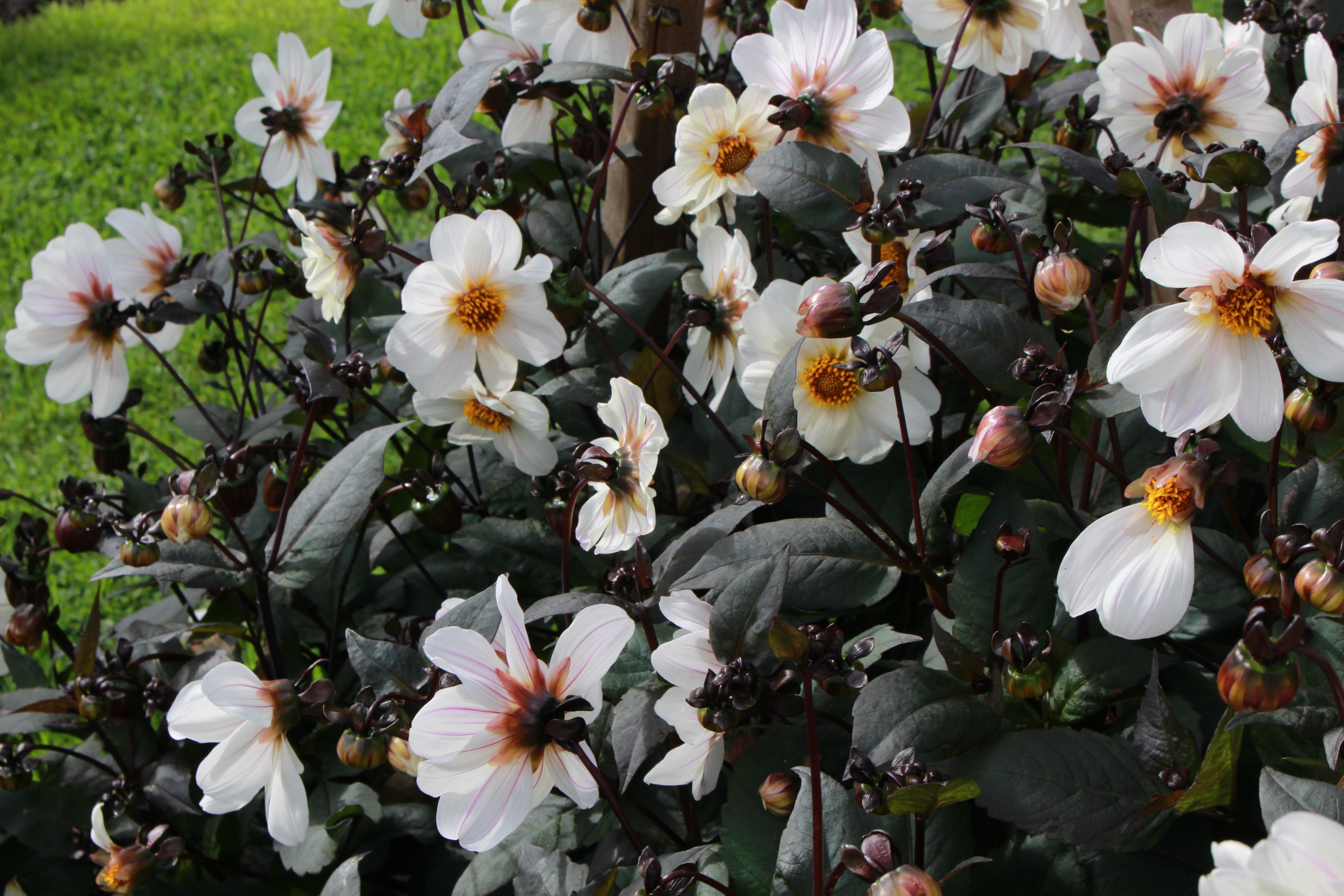Dahlia 'Bishop of Dover' (Sin)
Approx. 0.5 litre pot
About this cultivar:
Dahlia 'Bishop of Dover' (Sin) was first introduced by Van der Linden from Hillegom, The Netherlands in 2005. This Single class 'Bishop' variety has dark stems and purple, black, chocolate, bronze foliage which contrasts wonderfully with the ivory white flowers that are veined faintly with lilac. They make excellent cut flowers and pollinating insects will flock to them!
- Position: Full sun, partial shade
- Soil: Almost any soil, grows well in Ballyrobert
- Flowers: May, June, July, August, September, October
- Other features: Interesting Foliage or Fruit, Cut Flowers or Dried Flowers
- Hardiness: H3 - Hardy in coastal and relatively mild parts of the UK (-5 to 1°C), Half Hardy, grows well in Ballyrobert but dies every 3-4 years when there is a bad frost
- Habit: Clump forming
- Foliage: Deciduous
- Height: 60 - 90cm (2 - 3 ft)
- Spread: 50 - 75 cm (1.5 - 2.5 ft)
- Time to full growth: 2 to 5 years
- Plant type: Herbaceous Perennial
- Colour: Green, yellow, white, purple, black
- Goes well with: --
About this genus:
Dahlia is a genus of bushy, tuberous, herbaceous perennial plants native to Mexico. A member of the Asteraceae there are 42 species of in the genus, with hybrids commonly grown as garden plants. What are they like? So much breeding means they can vary enormously in colour and size! Most however are summer flowering, not very hardy, medium in size. There is also a subsection that are shrubby aka Tree Peonies. The Dahlia was declared the national flower of Mexico in 1963.
Spaniards reported finding the plants growing in Mexico in 1525, but the earliest known description is by Francisco Hernández, physician to Philip II, who was ordered to visit Mexico in 1570 to study the "natural products of that country". They were used as a source of food by the indigenous peoples.
Hernandez described two varieties of dahlias and sent the report back to Spain but nothing much happened for a while……until……in 1789, Vicente Cervantes, Director of the Botanical Garden at Mexico City, sent "plant parts" to the Director of the Royal Gardens of Madrid. In 1791 he called the new plants ‘Dahlia’ for Anders Dahl, the student of Linneaus. The seeds then travelled rapidly throughout Europe and by 1824 they were appearing in poetry: Lord Holland sent his wife a note containing the following verse:
"The dahlia you brought to our isle
Your praises for ever shall speak;
Mid gardens as sweet as your smile,
And in colour as bright as your cheek."
They have kept growing in popularity ever since and there are now more than 57,000 registered cultivars, which are officially registered through the Royal Horticultural Society. Obviously the variety of flowers offered is addictive. However, there is one colour that gives breeders the blues……In 1846 the Caledonia Horticultural Society of Edinburgh offered a prize of 2,000 pounds to the first person succeeding in producing a blue Dahlia. To date this prize hasn’t been claimed!
Dahlias do not grow in climates which experience frost. However, gardeners with frosts can lift the tubers from the ground and store them in frost-free conditions during the winter. Planting the tubers quite deep (10 – 15 cm) also provides some protection, and I even know customers ot he coast who don’t bring them in. Often I see people grow them in pots, they sink 50-100% of the pots in the border over the growing season and bring them inside over winter.
We just leave them outside and replace every 3-5 years when a frost takes them…


